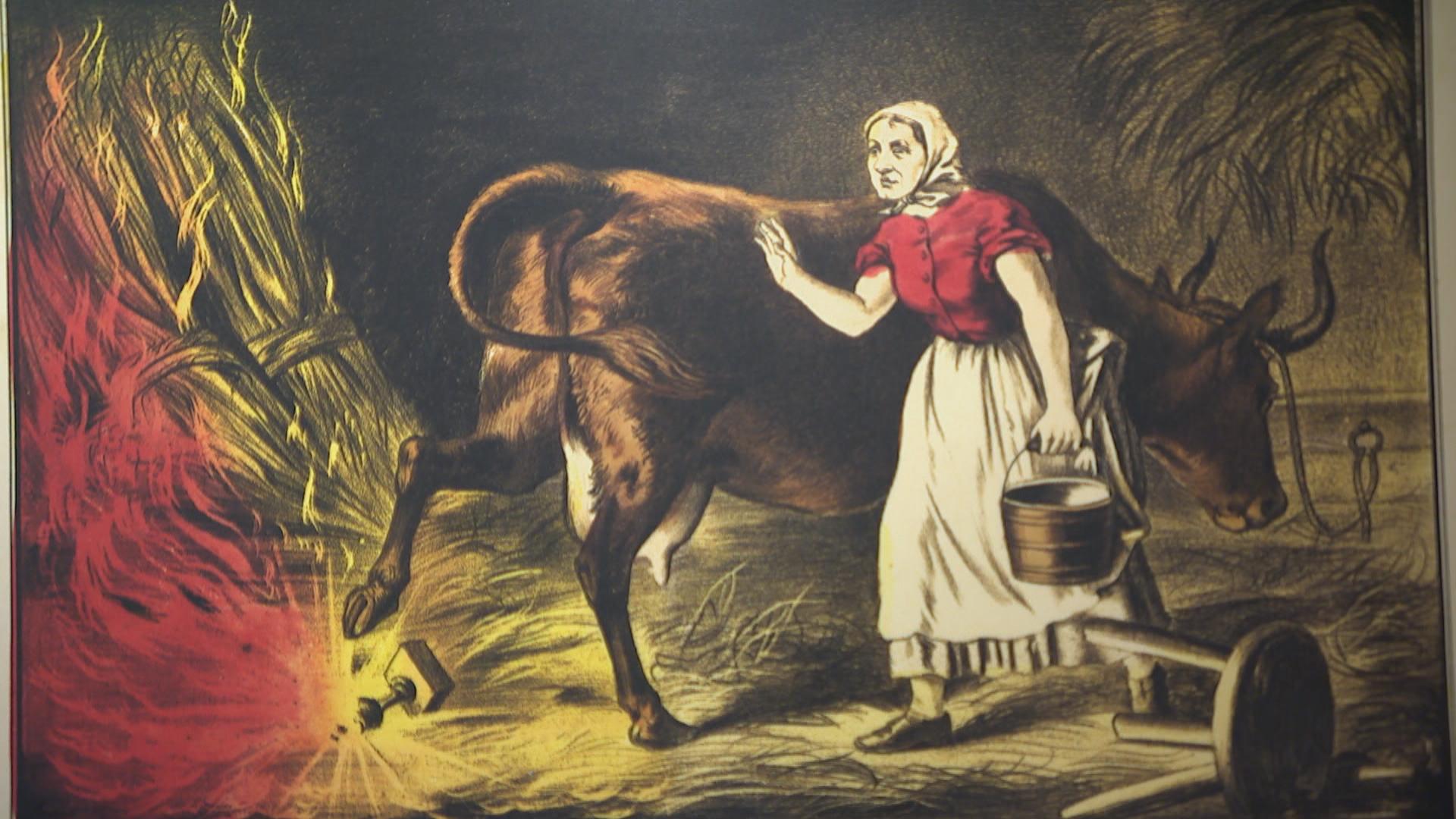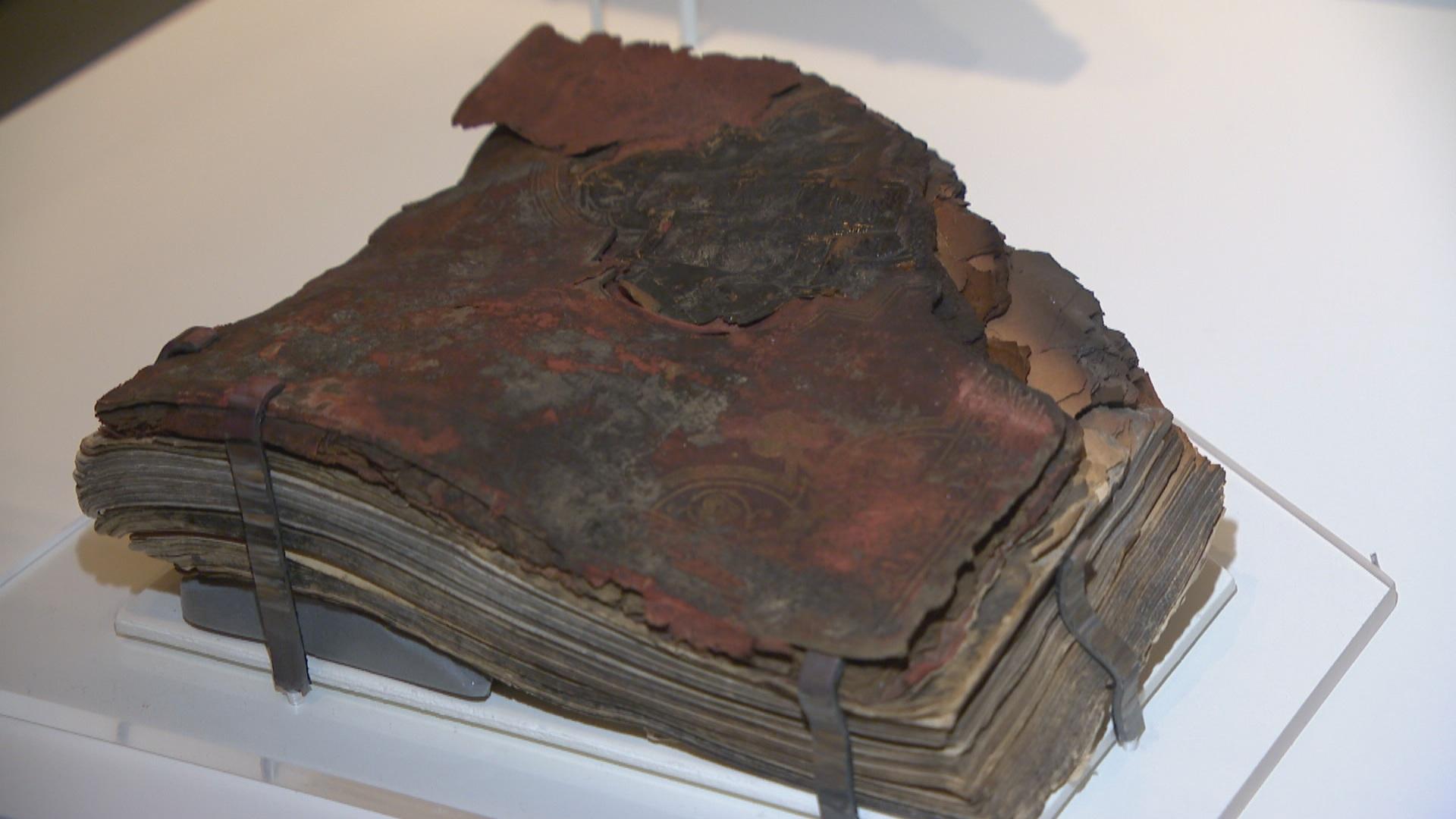Friday, Oct. 8, marks 150 years since the start of the Great Chicago Fire, which began on a Sunday night in the O’Leary’s barn on the near South Side.
The fire burned until Tuesday morning as far north as Lincoln Park. A new exhibit offers a fresh look at the calamity that scorched the city in 1871, a century and a half ago.
TRANSCRIPT
Marc Vitali: Newly commissioned artwork depicts the blaze and the reactions of the people in the city. Short films by Chicago’s acclaimed animation collective Manual Cinema use shadow puppetry to depict the fire and share eyewitness accounts from survivors.
The new, family-friendly exhibition at the Chicago History Museum displays a child’s marble collection – melted, a charred book of hymns – the only book from the original Chicago Historical Society to survive the fire, and a piece of wood from the O’Leary family’s barn.
Julius L. Jones, curator, Chicago History Museum: You’re going to see first and foremost what the city that caught on fire in 1871 was like. It was a wooden city. It had been built fast and cheaply as it was the fastest growing city in the entire world, and from there you’re going to learn about how that building, largely through wood, set the conditions for the fire.
It’s a flammable city. There’s been a drought, there’s been above normal temperatures, and there’s strong winds blowing.
But you’re also going to learn about the social climate, how the city was divided in a lot of ways and that sets the context for what happened after the fire, especially as it relates to the myth of Mrs. O’Leary and her cow. We introduce you to Catherine O’Leary, her husband Patrick, and the idea that in many ways she is a scapegoat, a stand-in for a group of people – immigrants, non-English-speaking, Catholics – who are being blamed for a whole host of social ills in Chicago at the time.
 (WTTW News)
(WTTW News)
Vitali: Outside the museum, a lava-like relic from the fire kicks off the new History Trail at the corner of Clark and LaSalle. Inside, there’s a closer look at the efforts to contain the fire – and the blaze’s traumatic effect on the residents.
Jones: We talk about how people process a disaster of this scale. It was hard for people to fathom, and still is in a lot of ways, just how much was destroyed. You’re talking about 17,500 buildings, 100,000 people left homeless, and so we talk about how people even just come to terms with the disaster of that magnitude. And then we can get into the recovery and how, in the age where there’s no FEMA, there’s no emergency response: How do you manage a recovery of that scale?
 (WTTW News)
(WTTW News)
Vitali: One way was outside help. An outpouring of support from around the world brought much needed relief to the beleaguered city.
Jones: The fire literally clears the central business district, what we now know as the Loop, and makes it available for new construction. So that clearing of space allows us to build bigger buildings and literally allows the city to grow up in terms of skyscrapers and steel-frame construction. All of that happens after the fire and now, obviously, skyscrapers and ever-taller buildings define life in Chicago.
In many ways the city came together around its self-identity and self- conceptualization. There was an old moniker for the city that has fallen out of use, but it was the phoenix city, right? Like that mythical bird, it had burned and resurrected itself up from its own ashes, and that was deeply embedded in how Chicagoans thought of themselves.
Visit the Chicago History Museum website for more information about the exhibit and WTTW’s Great Chicago Fire website for additional stories about the fire and its aftermath.








